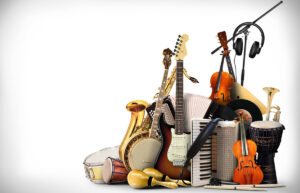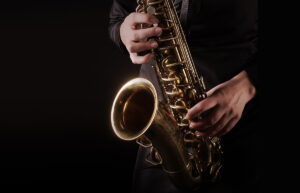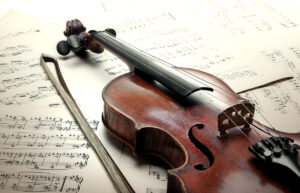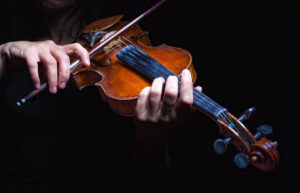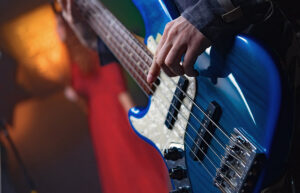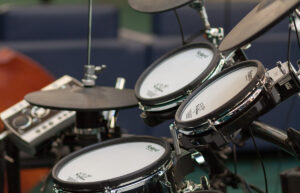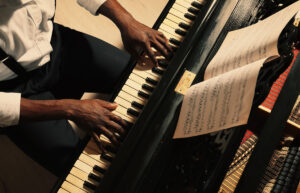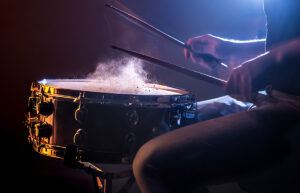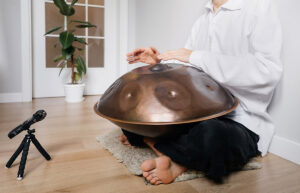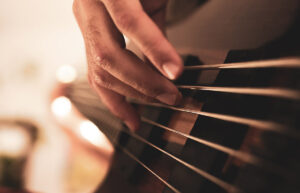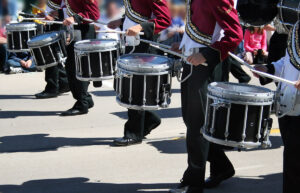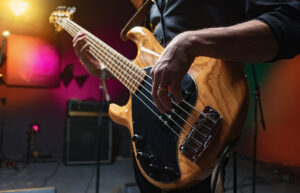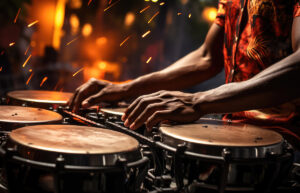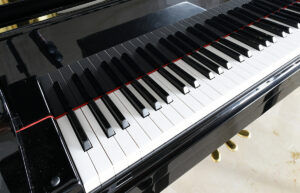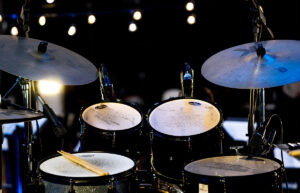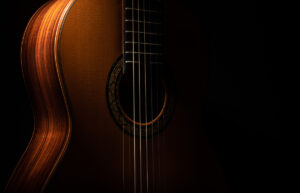Types of Cymbals for Drums: Guide to Types, Shapes & Sizes

In our comprehensive guide, we dive into the diverse realm of ‘ Types of Cymbals for Drums,’ exploring the different varieties that bring drum kits to life. Join us on a journey through the anatomy of cymbals, dissecting their materials, shapes, sizes, tones, and suitability for different genres. This guide is your go-to resource for understanding the intricacies of crash, ride, hi-hat, and other cymbal varieties. So, tighten your drumheads, grab those sticks, and explore the world of cymbals—one crash, ride, and splash at a time.
Welcome to TheDemoStop, now join the community!
Connect with artists, fans and producers around the world.
What are cymbals?
Cymbals are musical instruments that belong to the percussion family. They typically consist of thin, round metal plates that produce sound when clashed together or struck with a drumstick. They add a bright and shimmering quality to the music, and you can find them in various sizes and types, such as crash cymbals, ride cymbals, and hi-hats. They’re a crucial part of a drum kit and are also used in orchestras and various genres of music to provide accents and rhythmic texture.
How are cymbals made?
The process of making cymbals is a combination of craftsmanship, metallurgy, and artistry. Here’s a general overview of how cymbals are made:
- Material selection: The most common material for high-quality cymbals is a bronze alloy, often called B20. It consists of 80% copper and 20% tin. Some budget-friendly cymbals may use B8 bronze, with 92% copper and 8% tin.
- Casting: The chosen alloy is melted in a furnace, and the liquid metal is poured into a mold to create a rough cymbal shape. This process is known as casting.
- Rolling: The cast cymbal is then rolled to a specific thickness. Thicker cymbals tend to have a higher pitch and longer sustain, while thinner ones offer a quicker response and darker tone.
- Shaping: The rough cymbal is cut into its final shape. This step involves trimming the edges, creating the bell (the raised center of the cymbal), and shaping the overall profile.
- Lathing: The cymbal is placed on a lathe, a machine with a spinning surface, and a skilled artisan uses various tools to create the cymbal’s profile and finish. Hand-hammering is also done during this stage for traditional cymbals.
- Hammering: Hand-hammering involves shaping the cymbal’s surface by striking it with hammers. This process adds tonal complexity and creates unique patterns on the cymbal.
- Heat treatment: The cymbal is subjected to a heat treatment process known as annealing, which relieves internal stresses and enhances the cymbal’s overall tonal characteristics.
- Finishing: The cymbal undergoes various finishing processes. This process can include polishing for a brilliant finish or leaving it unlathed and unpolished for a more traditional appearance.
- Testing: Each cymbal undergoes thorough testing to ensure it meets quality standards. This phase includes checking for imperfections, assessing tonal qualities, and ensuring the cymbal responds well to playing.
- Branding and packaging: Once the cymbal passes quality control, it is branded with the manufacturer’s logo and packaged for distribution.
Types of cymbals for drums
Crash cymbal

Crash cymbals are designed for impactful accents and explosive bursts of sound. They add drama and emphasis to various song parts, making them essential for dynamic drumming.
- Material: Typically made from B20 bronze for a balanced and rich tone. This material allows for a versatile sound suitable for various genres.
- Shape: Crash cymbals come around with a slight upturned edge, facilitating the quick and explosive response needed for their role.
- Size: Ranges from 14 inches to 20 inches or even larger. Smaller sizes produce a quicker, brighter sound, while larger sizes offer more volume and sustain.
- Tone: Bright and explosive. The tone can vary based on the size and thickness of the cymbal. Smaller crashes are higher-pitched, while larger ones have a deeper, fuller sound.
- Sustain: Short to medium sustain. This quick decay allows for an immediate impact and doesn’t overshadow the rest of the music.
- Finish: The finish can vary, but a brilliant finish (machine-polished for a shiny surface) is common, enhancing the cymbal’s brightness and projection.
- Suitable genre: Versatile enough for various genres, including rock, pop, punk, and metal. Smaller crashes may suit jazz and fusion settings.
Hi-hat cymbals

Hi-hat cymbals consist of a pair of cymbals mounted on a stand and played with a foot pedal. They are crucial for maintaining a steady rhythm and adding dynamic accents to drumming patterns.
- Material: Typically made from B20 bronze for a balanced and versatile sound. Some entry-level hi-hats may use B8 bronze for affordability.
- Shape: Hi-hats have a circular shape with a slight curvature to facilitate the “chick” sound when the two cymbals come together.
- Size: Common sizes range from 13 inches to 15 inches. Smaller hi-hats produce a tighter sound, while larger ones offer more volume and a fuller tone.
- Types:
- Closed hi-hats: When the two cymbals are pressed together, creating a crisp and tight sound.
- Half-open hi-hats: Slightly opened, providing a mix of tightness and openness.
- Open hi-hats: Fully separated, producing a brighter, more sustained sound.
- Tone: Hi-hats can have a range of tones, from bright and cutting to warm and mellow, depending on size and thickness.
- Sustain: Short to medium sustain. The closed position quickly decays, while open hi-hats can be more sustained.
- Finish: Various finishes are available, including traditional (hand-hammered for a classic look) and brilliant (machine-polished for a shiny appearance).
- Suitable genre: For various genres, including rock, pop, jazz, funk, and more. The versatility of hi-hats makes them a staple in multiple musical styles.
Welcome to TheDemoStop, now join the community!
Connect with artists, fans and producers around the world.
Ride cymbals

Ride cymbals are a fundamental component of a drum set, providing a rhythmic foundation, and are often used for more extended, sustained playing, especially in patterns like ride cymbal grooves.
- Material: Commonly made from B20 bronze for a balanced and versatile sound. Some budget-friendly options may use B8 bronze.
- Shape: Ride cymbals typically have a larger, more expansive shape than crash cymbals. The bow is usually gently curved, and the edge can be plain or have subtle features.
- Size: Sizes range from 18 to 22 inches or even larger. The larger ride cymbals generally offer more volume and a fuller sound.
- Tone: The tone of ride cymbals can vary widely. They can be bright and pingy, dark and dry, or anywhere in between. Bell tones are often clear and distinct.
- Sustain: Ride cymbals have a medium to sustain long. This characteristic allows drummers to ride on them for a continuous, flowing sound.
- Finish: Finishes vary, but a common choice is a traditional finish with hand-hammered patterns for a classic appearance. Some may have a brilliant finish for added brightness.
- Suitable genre: Versatile enough for various genres. Bright and pingy rides suit rock and pop, while darker, dryer rides may complement jazz and blues. The choice depends on the drummer’s preference and the musical context.
Splash cymbals

Splash cymbals are small, quick cymbals that deliver a bright and fast sound. They are often used for quick accents, adding a touch of sparkle to drum patterns.
- Material: Splash cymbals are typically made from B20 bronze for a balanced and crisp sound. Some budget-friendly options may use B8 bronze.
- Shape: They have a round, compact body with slightly upturned edges. This design allows for a quick response and immediate decay.
- Size: Splash cymbals are generally smaller, ranging from 6 to 12 inches. The smaller the size, the quicker and brighter the sound.
- Tone: The tone of splash cymbals is bright, sharp, and cutting. They produce a quick burst of sound, making them ideal for emphasizing specific beats or accents.
- Sustain: Splash cymbals have a very short sustain. The sound is quick and to the point, without lingering for an extended period.
- Finish: Common finishes are traditional (hand-hammered for a classic appearance) and brilliant (machine-polished for a shiny surface). The choice depends on the drummer’s aesthetic preference.
- Suitable genre: Splash cymbals are versatile and can be used in various genres. Rock, pop, and metal often use them for quick, impactful accents. In jazz, they can add a subtle touch to intricate patterns.
China cymbals

China cymbals have a distinctive, trashy sound with an upturned edge, resembling the shape of a traditional Chinese gong. They are known for their unique and explosive character.
- Material: China cymbals are typically made from B20 bronze, providing a balance of warmth and brightness. Some budget-friendly options may use B8 bronze.
- Shape: They have a unique, inverted shape with a flanged edge, contributing to their trashy and explosive sound. The bell is often smaller than that of other cymbals.
- Size: Sizes range from 12 inches to 24 inches or more. Smaller chinas may respond faster, while larger ones can produce a more prominent and sustained trashy sound.
- Tone: China cymbals are known for their dark, trashy, and explosive tone. They deliver a quick, cutting attack with a complex, often oriental-inspired sound.
- Sustain: China cymbals typically have a short to medium sustain. The trashy quality of the sound ensures that it doesn’t linger for too long.
- Finish: Finishes can vary, but many china cymbals have a brilliant finish for added brightness and visual appeal. Some may have unique lathing patterns or hammering for additional character.
- Suitable genre: China cymbals are often associated with rock, metal, and punk genres, where their explosive and trashy sound can cut through dense mixes. They can also add a unique flair to experimental and fusion genres.
Bell cymbals

Bell cymbals, known as bell splashes or cup chimes, are designed primarily for their bell-like sound. They have a small, focused profile, making them ideal for creating clear, distinct bell tones.
- Material: Bell cymbals are typically made from B20 bronze for a balanced and clear sound. Some budget-friendly options may use B8 bronze.
- Shape: They have a cup-shaped design with a relatively flat profile. The bell area is pronounced, allowing drummers to strike it for a clear and distinct bell sound.
- Size: Sizes can vary, but bell cymbals are generally smaller, ranging from 4 to 10 inches. The compact size contributes to their focused and bright tone.
- Tone: The primary purpose of bell cymbals is to produce a clear and cutting bell tone. The sound is bright, focused, and often used for accents and rhythmic patterns.
- Sustain: Bell cymbals typically have a short sustain, allowing for quick and precise accents. The focus is on the immediate attack and quick decay.
- Finish: Finishes can vary, but many bell cymbals have a brilliant finish for enhanced brightness. Some may have traditional finishes for a classic appearance.
- Suitable genre: Bell cymbals are versatile and can be used in various genres. They are commonly used in rock and metal for accenting specific beats or creating rhythmic patterns. They can also add a unique touch to jazz and fusion styles.
Welcome to TheDemoStop, now join the community!
Connect with artists, fans and producers around the world.
Effects cymbals

Effects cymbals are a category that includes various unconventional cymbals designed to add unique and experimental sounds to a drummer’s setup. This category can include cymbals like chimes, stacks, ozone cymbals, and more.
- Material: The material for effects cymbals can vary widely. B20 bronze is common for many high-quality options, providing a good balance of warmth and brightness. Some may use other alloys for specific sonic characteristics.
- Shape: Shapes can range from traditional round cymbals to more exotic designs. Stacks, for example, involve placing two cymbals on each other to create a unique sound. Chimes have a linear arrangement of small cymbals for a shimmering effect.
- Size: Sizes vary greatly depending on the type of effects cymbal. Stacks may be compact, while chimes can extend across a larger area. The size often influences the complexity of the sound produced.
- Tone: The tone of effects cymbals is highly diverse. Stacks produce a dry and trashy sound, chimes offer a shimmering and bell-like quality, and ozone cymbals have cutouts for a more pronounced, trashy tone.
- Sustain: Sustain varies widely. Stacks and chimes may have a short sustain, while ozone cymbals, with their cutouts, can produce a quick, dry sound.
- Finish: Finishes depend on the specific type of effects cymbal. Traditional or brilliant finishes are common, but some effects cymbals may have unique lathing patterns, holes, or other design elements.
- Suitable genre: Effects cymbals best suit experimental and creative genres. They find a home in avant-garde, experimental rock, electronic, and genres that embrace unconventional sounds and textures.
Finger cymbals (Zills)

Finger cymbals, also known as zills, are small cymbals played with the fingers, often used in traditional and folk music. They are commonly associated with belly dance performances and other cultural music traditions.
- Material: Finger cymbals are typically made from brass or bronze alloys. The specific alloy can vary, influencing the overall sound characteristics.
- Shape: Finger cymbals are small, circular discs with a slight dome shape. They usually have a slot for the thumb and are played by striking the edges together.
- Size: Sizes are generally small, ranging from 1.5 to 3 inches in diameter. The compact size allows for easy manipulation with the fingers.
- Tone: The tone of finger cymbals is bright and metallic. When struck together, they produce a clear, ringing sound, and the pitch can vary based on size and material.
- Sustain: Finger cymbals have a short sustain. The sound is immediate and crisp, making them suitable for rhythmic patterns and accents.
- Finish: Finger cymbals have a natural metallic finish.
- Suitable genre: Finger cymbals are traditionally associated with Middle Eastern and Eastern European music, especially in the context of belly dance performances. They can also be used in various folk and traditional music genres where a bright and rhythmic accent is desired.
Summary
What are cymbals? Cymbals are percussion instruments consisting of thin, metal discs that produce sound when struck, usually with a drumstick, mallet, or brush. They add a distinctive and dynamic element to drum kits, contributing to the overall rhythm and texture of the music.
How are cymbals made? Crafting cymbals is a meticulous process, merging craftsmanship, metallurgy, and artistry. It begins with selecting bronze alloys, casting, rolling, and shaping. Subsequently, lathing and hammering are performed, followed by heat treatment, finishing, rigorous testing, and eventual branding and packaging for distribution. Each step contributes to the cymbal’s unique tonal qualities and appearance.
Types of cymbals: The different types include crash cymbals, ride cymbals, hi-hat cymbals, China cymbals, splash cymbals, sizzle cymbals, effects cymbals, and finger cymbals. Each type contributes distinct tones and characteristics to the overall drumming experience.
FAQs
What are cymbals?
Cymbals are percussion instruments consisting of thin, usually circular metal plates. They come in various sizes and types, such as crashes, rides, hi-hats, and chinas. Drummers use cymbals to add accents, dynamics, and texture to their playing in various styles of music.
How are cymbals made?
Cymbals are typically made from a bronze alloy (usually a combination of copper and tin) shaped into a disc. The disc is then hammered, lathed, and sometimes heat-treated to achieve the desired thickness, shape, and sound characteristics. The specific manufacturing process can vary among cymbal brands and models, influencing the cymbal’s tone and quality.
What are the types of cymbals?
The different types of cymbals:
- Crash cymbals
- Ride cymbals
- Hi-hat cymbals
- China cymbals
- Splash cymbals
- Sizzle cymbals
- Effects cymbals
- Finger cymbals
Why do drummers use two crash cymbals?
Drummers use two crash cymbals to achieve simultaneous crashes for a more impactful sound, introduce contrast between the cymbals, and execute intricate patterns and fills with greater versatility.
What are the two cymbals together called?
It’s often called a cymbal crash when two cymbals are played together. The sound is produced by striking both cymbals simultaneously, creating a loud and dramatic effect commonly used in music to emphasize or signal a transition.
What are trashy cymbals?
Trashy cymbals refer to a type of cymbal with a unique, edgy sound characterized by a quick decay and a raw, gritty quality. When struck, these cymbals often have irregular or untraditional shapes, producing a “trashy” or “white noise” sound.
What is the upside-down cymbal called?
An upside-down cymbal is often called a “China cymbal” or simply a “China.” This type of cymbal is characterized by its unique inverted shape, which gives it a distinctive sound with a quick, trashy, and oriental quality. The name “China” likely comes from the sound associated initially with the cymbals used in traditional Chinese music.
What is the most important cymbal on the drum set?
While each cymbal in a drum set serves a specific purpose, the hi-hat cymbals are often considered among the most important. The hi-hat consists of two cymbals mounted on a stand, and they are played by using a foot pedal to open and close them. The hi-hat is crucial for establishing the rhythm and providing a sense of pulse in many styles of music.
What is the tiny cymbal called?
The tiny cymbal is called the “splash cymbal.” Splash cymbals are small-diameter cymbals that produce a quick, bright, and often piercing sound. They typically add accents and short, crisp bursts of sound to drumming patterns. Splash cymbals are popular in various genres of music, and their smaller size sets them apart from larger cymbals like crashes or rides.
What are cymbals used for?
Cymbals are percussion instruments that create various sounds in drumming and musical performances, including crashes, rides, and hi-hat effects. They add dynamics, accents, and texture to the music.



